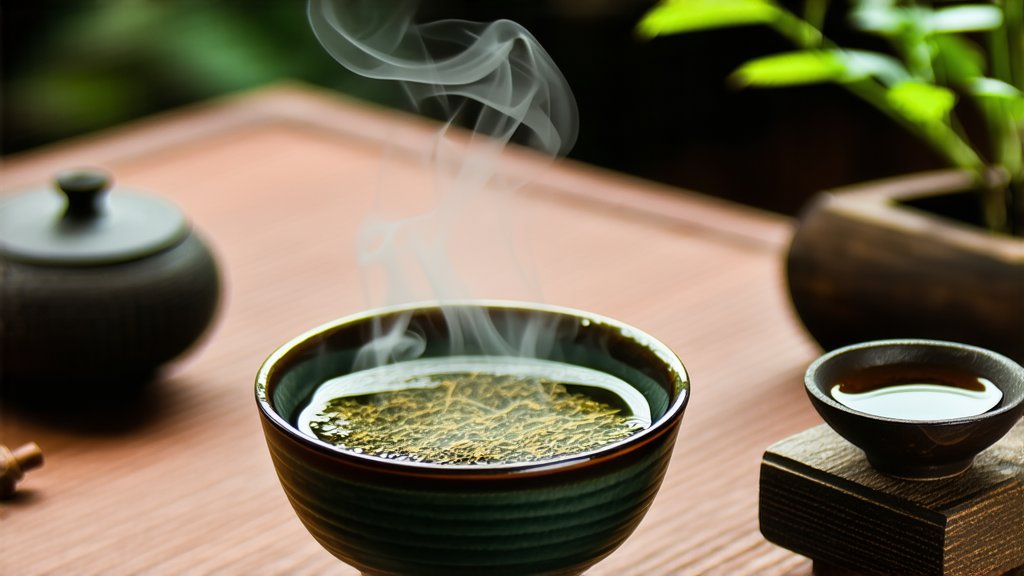
Pu-erh tea, hailing from the lush mountains of Yunnan Province in southern China, stands as one of the most intriguing and storied varieties within the vast spectrum of Chinese black teas. Its unique production process, rich history, and profound cultural significance have captivated tea enthusiasts and connoisseurs worldwide for centuries. This essay delves into the fascinating world of Pu-erh, exploring its origins, diverse types, intricate manufacturing techniques, and the art of its appreciation.
Historical Roots
The tale of Pu-erh begins in the ancient caravan routes that connected Yunnan to Tibet, known as the Tea Horse Road. It is believed that this tea has been cultivated and traded along these routes for over a millennium. The name 'Pu-erh' itself originates from the city of Pu'er, which served as a pivotal trading hub during the Ming Dynasty (1368-1644 AD). Over time, Pu-erh evolved not just as a beverage but as a cultural and economic symbol, deeply intertwined with the history and traditions of China.
Varieties and Classifications
Pu-erh tea is broadly categorized into two main types: Raw (Sheng) and Ripe (Shou). Each type undergoes distinct processing methods, leading to different flavor profiles and aging characteristics.
-
Raw Pu-erh (Sheng): This variety is minimally processed and retains more of its natural greenish hue post-drying. Raw Pu-erh is renowned for its potential to improve with age, developing complex flavors over decades. Its taste can range from fresh and grassy when young to mellow and earthy after maturation.
-
Ripe Pu-erh (Shou): Unlike its raw counterpart, ripe Pu-erh undergoes a post-fermentation process known as 'wet piling' or 'wo dui,' which accelerates the aging process. This results in a dark brown or blackish leaf, offering a smoother, earthier, and sometimes sweeter taste compared to raw Pu-erh. Ripe Pu-erh is typically ready for consumption shortly after production.
Crafting the Perfect Cup
The production of Pu-erh tea is an art form that combines traditional wisdom with meticulous attention to detail. Here's a glimpse into the intricate steps involved:
-
Harvesting: Only the top one or two leaves and the bud are handpicked during specific seasons to ensure optimal quality.
-
Withering: Fresh leaves are spread out to wilt under the sun, reducing moisture content and softening the leaves for rolling.
-
Rolling: Leaves are rolled into tight spirals, enhancing the extraction of flavors during brewing.
-
Sun Drying (for Raw Pu-erh): Rolled leaves are dried naturally under the sun, preserving their natural enzymes for future fermentation.
-
Wet Piling (for Ripe Pu-erh): After initial drying, leaves are piled together in a controlled environment with high humidity and temperature, encouraging microbial activity that transforms the tea's character.
-
Aging: Both types may be stored in ventilated warehouses, where they continue to mature and develop their unique flavors over time.
The Art of Tasting Pu-erh
Appreciating Pu-erh tea goes beyond mere drinking; it's an experience that engages all senses. Here's how to embark on this sensory journey:
-
Preparation: Use a Yixing clay teapot or a Gaiwan (a Chinese lidded bowl) for brewing, as they help enhance the tea's aroma and flavor.
-
Water Temperature: Boil water to around 95°C (203°F) for raw Pu-erh and slightly cooler for ripe Pu-erh.
-
Rinsing: Rinse the leaves briefly with hot water to awaken them and discard this first infusion.
-
Steeping: Add the rinsed leaves to the pot and pour hot water over them. Steep for about 10 seconds initially, gradually increasing steeping time for subsequent infusions.
-
Observing: Admire the color of the liquor, which can vary from light amber to deep red depending on the type and age of the tea.
-
Smelling: Inhale the aroma before taking your first sip. Note any floral, earthy, or woody notes.
-
Tasting: Sip slowly, allowing the tea to coat your palate. Pay attention to its complexity, body, and aftertaste. With each infusion, you'll discover new layers of flavor.
Health Benefits
Beyond its cultural and historical significance, Pu-erh tea is celebrated for its potential health benefits. Rich in antioxidants, it is believed to aid digestion, support weight loss, lower cholesterol levels, and promote cardiovascular health. Regular consumption may also contribute to improved metabolism and overall wellbeing.
In conclusion, Pu-erh tea embodies the essence of Chinese tea culture – a harmonious blend of tradition, craftsmanship, and wellness. Whether you're a seasoned tea drinker or a curious newcomer, exploring the world of Pu-erh offers a gateway into a rich tapestry of flavors, history, and rituals that have stood the test of time. So, brew yourself a cup, savor the moment, and let the timeless allure of Pu-erh transport you on a journey through centuries of Chinese heritage.